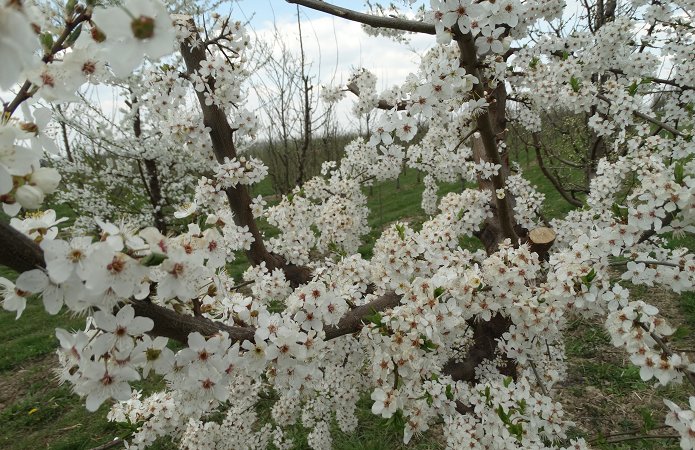Another wave of spring frosts: will Ukraine have fruit and berries?
30 April 10:56
The third wave of frosts on the night of April 27-28, unlike the previous ones, also affected later and more resistant orchards, including apple and pear trees. How will this affect the harvest? The situation was investigated by EastFruit experts, "Komersant Ukrainian" reports.
Gardeners warn that the third wave may not be the last and the threat of frost throughout Ukraine will remain at least until May 17. According to the Ukrainian Hydrometeorological Center, short-term cold snaps are possible in May 2025, which could complicate the situation for gardeners, especially in the central and western regions.
How the last April frosts affected the condition of gardens
Experts point out that the air temperature at night varied not only between regions, but also within individual areas. For example, in gardens located in lowlands, the temperature often dropped to minus 5-6 °C, which could significantly damage the harvest in gardens that were in bloom at the time. At the same time, in the same region, the temperature in the hills could be 3-4 °C higher, which reduced the likelihood of crop losses.
According to the EastFruit agency, most complaints about possible crop losses came from Vinnytsia region, which is considered the capital of horticulture in Ukraine. This also means that gardeners in Moldova also had problems.
However, most farmers say that the losses from the latest wave of frosts for apple and pear orchards will be minimal, although there will be some impact. Frosts can negatively affect the quality of fruit and reduce its suitability for long-term storage. Stone fruit crops that have already blossomed and formed the ovary are likely to have survived this wave of frost without significant losses. However, crops that were in the flowering phase may have suffered additional losses. Damage has also been reported on garden strawberry plantations.
What fruit yields should we expect
Given the losses from the previous waves of frost, it is likely that the overall production of stone fruits such as cherries, peaches, nectarines and apricots in Ukraine will be relatively low. Imports from the southern countries of the European Union, Turkey, and Central Asia are likely to provide the bulk of consumption of these fruits.
The harvest of summer raspberries is also expected to decline. Blueberries, according to preliminary estimates, were not affected by the frost. As for apples, there is no reason to believe that the harvest will be significantly reduced, but an accurate assessment will be possible only in the second half of May.
According to the Ministry of Agrarian Policy of Ukraine, in 2024, only 20% of horticultural farms had access to modern frost protection technologies, making the industry vulnerable to climate change. In fact, according to EastFruit experts, this percentage is much lower.
How to protect your garden
According to EastFruit, the main ways to protect orchards, vineyards and berry gardens from frost are
– sprinkling over the plants (the so-called ice shell), which is probably the most effective way to protect against frost, although this method, like others, has a number of serious limitations;
– the use of wind turbines is a universal method of frost protection that can also be used to cool the garden during critically high summer temperatures;
– growing under cover is obviously the best way to protect against frost, but the investment in it is much higher than the actual investment in the garden or berry garden itself.
For more information on methods of protecting orchards and vineyards from frost, please follow the link.
As reported, the countries of Central and Eastern Europe lack April rains, which can create problems for supply chains and farmers, and ultimately significantly affect the global grain market. Poland and Ukraine, which are the world’s leading grain exporters, may suffer the most.









